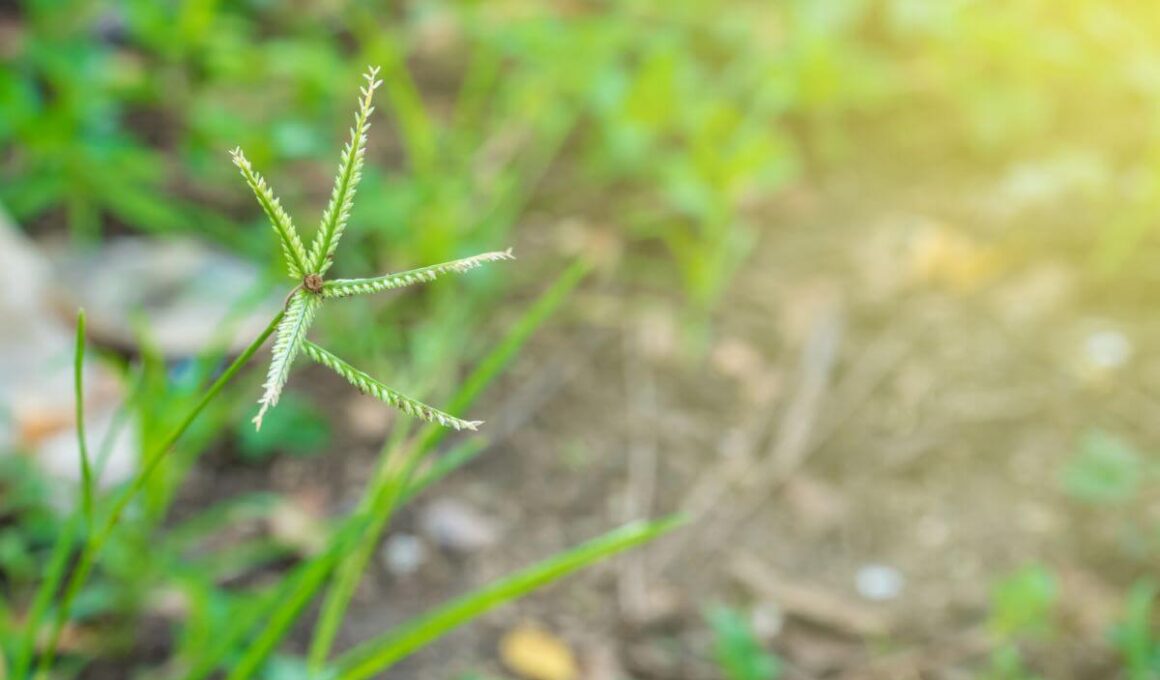Crabgrass and Goosegrass: How to Identify Them
The first step in crabgrass and goose grass control is identifying the problem. Goosegrass (Eleusine indica) is a type of summer annual grass that germinates in spring. It’s distinguished by its whitish, flattened stem and prostrate growth habit (meaning it lies close to the ground).
Crabgrass (Digitaria), on the other hand, is a type of annual or perennial (depending on the climate) grass that germinates in late winter or early spring, about 3-4 weeks earlier than goose grass. It gets its name from its long, hairy leaves that resemble crab legs. The two most prevalent species are:
- large crabgrass (D. sanguinalis), also known as hairy crabgrass;
- smooth crabgrass (D. ischaemum).
Both are commonly found on athletic fields, golf courses, and lawns. Left unchecked, goose grass can quickly take over your lawn and crowd out other grasses. The same is true for crabgrass. That’s why it’s important to control them as soon as you see them. Once you know which weed you’re dealing with, you can take the necessary steps to get rid of it.
How to Kill Goose Grass: Physical and Chemical Control Methods
The best way to control goosegrass is to prevent germination in the first place. You can do this by keeping your lawn healthy and thick. A thick lawn will crowd out goose grass and other weeds, preventing them from taking over.
Mowing your lawn regularly (at least once a week) will also help. Be sure to mow high, leaving the grass at least three inches tall. This will help shade the ground and prevent goose grass seeds from germinating.
Aerating the Soil
This weed thrives in compacted soils with poor turfgrass cover, so aerating your lawn regularly will also help. Aeration loosens the soil and allows air, water, and nutrients to reach the roots of your grass. This helps create a healthier lawn that’s better able to crowd out goose grass and other weeds.
Removing Goose Grass
If you already have goose grass in your lawn, you’ll need to take action to get rid of it. The best way to do this is by pulling it up by hand. Make sure to get the entire root system, so it doesn’t regrow.
You can also use a herbicide, but be sure to read the label carefully before applying. Some herbicides will only kill goose grass that’s actively growing, so you may need to reapply several times throughout the season.
How to Get Rid of Crabgrass
Dealing with crabgrass is a bit different from getting rid of goose grass. You can’t just use a herbicide and call it a day. Biological control is preferred, as the emergence of crabgrass is a sign that your lawn is unhealthy. If you kill the weed but don’t restore the lawn, crabgrass will return next year.
Keeping Your Lawn Healthy Is Enough to Control Crabgrass
The best way to control crabgrass is to start with a healthy lawn. As mentioned before, mowing regularly and aerating your lawn will help. You should also fertilize in early spring and late fall to help your grass stay strong and crowd out crabgrass.
Watering deeply and less often is also important. This encourages deep root growth, and it also helps prevent crabgrass from taking over, as this weed thrives in lightly watered, poorly-drained soils.
Are you prepared to deal with goose grass in your lawn? Good luck!



















